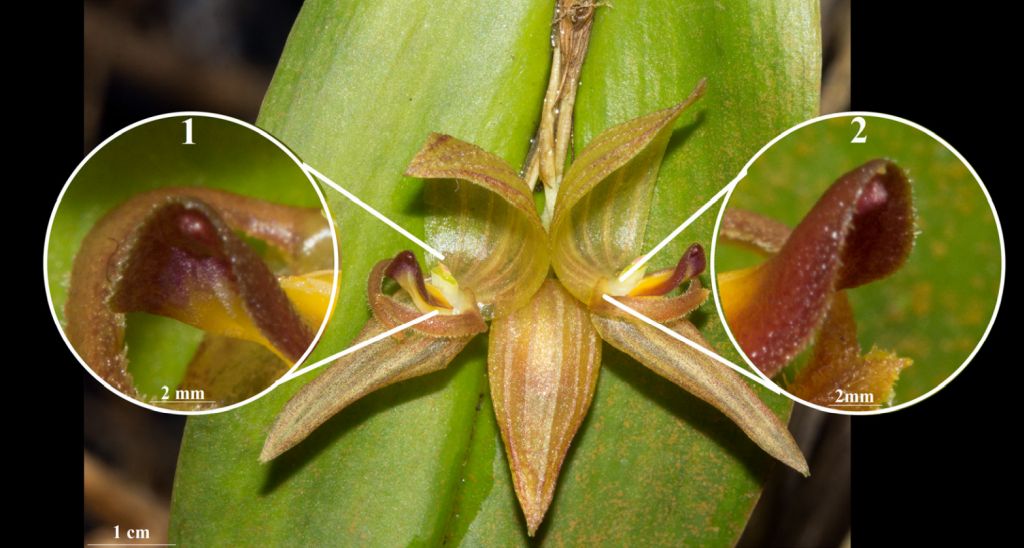

Pleurothallis quitu-cara Carrera & Baquero 2018 <SUBGENUS Pleurothallis SECTION Macrophyllae-Fasciculatae Lindl 1859
Comparison between P quitu-cara and P corysta
Photo/TYPE drawing by © Kilian Zuchan & Baquero ?



Common Name The Quitu Cara Pleurothallis [Honoring Quitu-Cara, the indigenous group which originally inhabited Quito and the valley near Quito, where the known population of the new species persists]
Flower Size .52" [1.3 cm]
Found in Pichincha province of Ecuador at elevation around 2900 to 3000 meters as a small to medium sized, cold growing epiphyte with stout and glandular, pendent to horizontal ramicauls enveloped by 3 tubular sheaths and carrying a single, apical, horizontal to pendent, coriaceous, oblong, slightly undulated, leaf-margins slightly deflexed, apex rostrate and acute, sub sessile below into the cordate to deeply cordate base leaf that blooms in the fall on subtended by a spathe, peduncles ,4 to .48" [10 to 12 mm] long within the spathe, a fascicle of simultaneously 1 to 4, single flowered inflorescence with shorter than the pedicel floral bracts.
"In its general shape of the flower, P. quitu-cara reminds some other species and species complex of Pleurothallis; P. corysta, P. adonis Luer, P. linguifera Lindl., P. grandiflora Lindl., P. jupiter Luer and P. sarcochila Garay . It is most similar to P. corysta but, the size of the flowers, the pubescent, slim petals and the shape of the lip are totally different among the two species. Two distinctive traits are present in P. quitu-cara lip; an elevated, microscopically pubescent, and quadrangular disc, and a small, protruding callus at the upward bent apex of the lip. Considering that the final portion of the lip bents upwards, the protrusion in the apex of the lip is most conspicuous and might have something to do with pollinator attraction. P. corysta, on the other hand, has a similar growing habit to the new species and a swollen apex of the central vein at the apex of the lip, also similar to P. quitu-cara although the shape of the petals, the glabrous flowers and the absence of an obvious glenion separates it from P. quitu-cara.
Synonyms
References W3 Tropicos, Kew Monocot list , IPNI ;
* Lankesteriana Vol 18 [2]: 87 Carrera & Baquero 2018 drawing/photo fide
--------------------------------------------------------------------------------------------------------------------------